 HydraFacial®
HydraFacial®7 Aestheticians Share Their Favorite Skincare Ingredients For Spring
From rejuvenating retinol to radiance-boosting vitamin C, The AEDITION spoke with the industry’s most coveted facialists to find out how to rid the mask of winter dullness and brighten up your complexion for the new season.
Feel like you need a dictionary every time you look at the ingredient list of a beauty product? Still unsure of the difference between retinol and retinoids? What about the unique benefits of vitamins B, C, and E? Are alpha and beta hydroxy acids the same thing? The skincare aisle can be overwhelming, but you don’t need a PhD in cosmetic chemistry to navigate it. With expert help, The AEDITION is demystifying and simplifying the beauty industry — one label at a time.
Spring fever, anyone? If you took a deep dive into our fall and winter skincare guides, then you already know how important it is to change your skincare regimen with the seasons. Long, cold, dreary winter days can make your skin look (and feel!) dull, tired, and lackluster. As the harsh weather starts to fade into spring, however, renewal and brightening take center stage.
“As the weather gets warmer and more humid, your skin can tolerate actives like retinol and vitamin C much better,” says Danuta Meiloch, founder of Rescue Spa in NYC and Philadelphia. “They’re a great way to treat post-winter dullness and dry skin.”
We spoke with seven in-demand aestheticians who agree with the promise of a brighter and dewier complexion for spring. Read on to find out more about these hero ingredients (plus, a new one worth checking out!), how to use them, and the product(s) to stock up on.
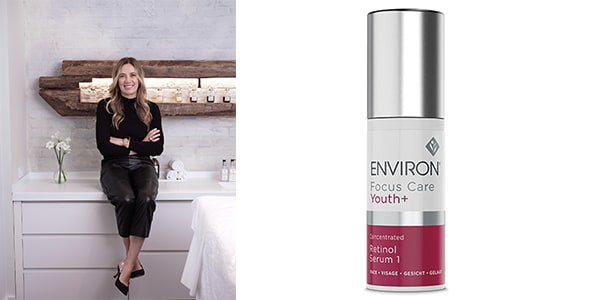
The Pro: Danuta Meiloch, founder of Rescue Spa in NYC and Philadelphia The Ingredient: Retinol The Superpower: Retinol is a topical form of vitamin A that assists in cellular turnover, which is essential to building new healthy skin cells and increasing collagen production. It also stimulates the production of new blood vessels in the skin. When used correctly, retinol tackles acne, post-acne scarring, lines, wrinkles, and hyperpigmentation. How to Use It: You want your skin to get acclimated to an active ingredient like retinol. Apply it before bedtime to take advantage of overnight skin regeneration and then apply a vitamin C on top or alternate days with vitamin C. Meiloch likes Environ Retinol 1 because it has a “lovely” gel consistency and contains colostrum and growth factors. “While you’re reaping all the benefits of retinol, you’re also repairing and rebuilding with colostrum,” she shares.
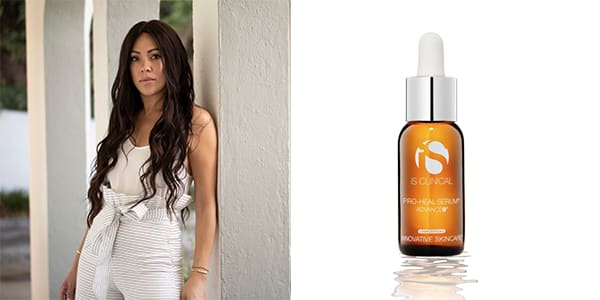
The Pro: Shani Darden, aesthetician and founder of Shani Darden Skin Care The Ingredient: Vitamin C The Superpower: A vitamin C serum provides much needed antioxidant protection to offset environmental stressors like UV exposure and pollution, as well as help to reverse the signs of sun damage. “It’s amazing for brightening the skin,” Darden says. How to Use It: Darden recommends using a vitamin C serum in the morning (after cleansing but before sunscreen). “It’s best to use a vitamin C serum during the day so that you’re getting all of the antioxidant benefits,” she shares. She recommends iS Clinical Pro-Heal Serum because it has an effective blend of vitamins A, C, E while also providing nourishment. For sunscreen, she likes the Supergoop Play Everyday Lotion because it’s a lightly hydrating SPF 50 that doesn’t cause congestion.
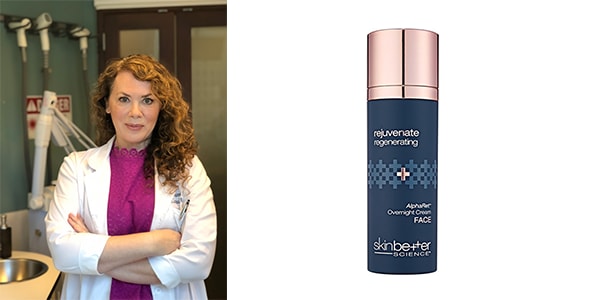
The Pro: Graceanne Svendsen, celebrity facialist at Shafer Clinic Fifth Avenue in NYC The Ingredient: Retinoid The Superpower: As an FDA-approved, prescription-strength topical that effectively stimulates cellular turnover, retinoids have been the go-to vitamin A derivative for decades. “There are many different types of retinoids, retinols, and retinoic acid, but my favorite is the retinoid due it's gentleness on the skin and its efficacy and usability,” Svendensen explains. “It’s safe for sensitive skin, acneic skin, and patients of warmer skin tones.” By preventing dead skin cells from building up, the benefits are tighter, brighter, and smoother skin. How to Use It: Apply a thin layer all over the face every other night to start. After about two weeks, you can titrate up to one pump every night and combine with your favorite serum and moisturizer. She recommends skinbetter science’s AlphaRet Overnight Cream. “The formula is balanced with the right amount of each ingredient, making it gentle on all skin types — including sensitive,” she says. “It doesn’t have any sulfates, parabens, fragrances, dyes, or gluten, keeping our immune system and endocrine safe from xenoestrogens (i.e. chemicals that mimic estrogen in the body).”
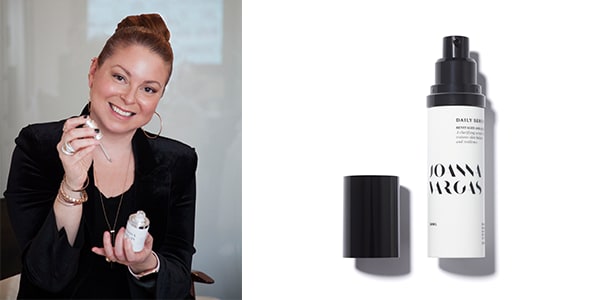
The Pro: Joanna Vargas, celebrity facialist and founder of Joanna Vargas Salons and Skin Care The Ingredient: Galactoarabinan The Superpower: For the uninitiated, galactoarabinan is an exfoliating and anti-inflammatory polysaccharide from the larch tree that causes more cell turnover than a lactic or salicylic acid. “It’s great because it won't irritate the skin and leaves it smooth, bright, and glowing,” Vargas boasts. How to Use It: She recommends using her Daily Serum, which contains the powerhouse ingredient, in the morning after cleansing but before moisturizing.

The Pro: Christina Lombardi, lead aesthetician at Skin Cancer and Cosmetic Surgery Center of New Jersey The Ingredient: Retinol The Superpower: As we get older, cellular turnover slows down, which makes skin look dull. Retinol increases cellular turnover, gently exfoliates the skin, and stimulates collagen production — addressing fine lines, wrinkles, acne, and pigmentation. How to Use It: Since most retinols are deactivated by sunlight, it’s recommended to incorporate them into a nighttime regimen. “I recommend my clients use a moisturizer before applying retinol, so their skin doesn’t get dry or irritated,” Lombardi commends. She suggests a prescription-strength product called Altreno, which is a type of tretinoin that’s great for treating blemish-prone complexions. “It stands out to me because it also contains hyaluronic acid that provides your skin with hydration throughout the day,” she says. It’s also suitable for sensitive skin types that cannot tolerate other types of retinol.
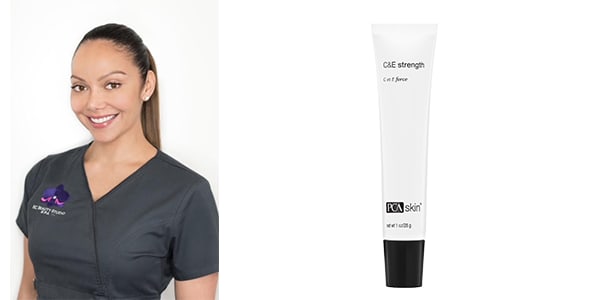
The Pro: Erica Cerpa, aesthetician and owner of EC Beauty Studio in Hoboken, NJ The Ingredient: Vitamin C The Superpower: Vitamin C helps reduce discoloration, stimulate collagen production, minimize fine lines and wrinkles, and protect your skin against future sun damage. “Since the weather is getting nicer and you’ll be spending more time outside, you’ll also be exposing your skin to more free radical damage from sun pollution,” Cerpa explains. “Vitamin C is an antioxidant that protects the skin against this free radical damage.” How to Use It: Apply vitamin C, like PCA Skin C&E Strength, in the morning before you apply your moisturizer and sunscreen for best results.
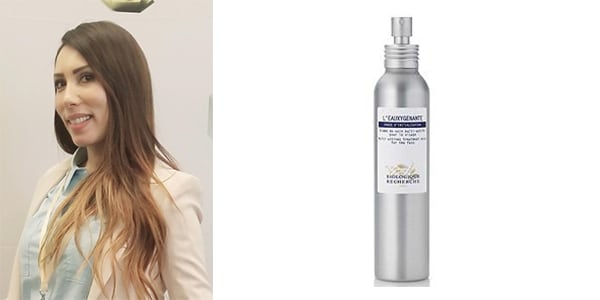
The Pro: Jade Haifa, esthetician at DAPHNE Studio in NYC The Ingredient: Vitamin A The Superpower: Your skin is consistently in need of antioxidants — especially vitamin A — when the weather gets warmer. It acts as a natural sunscreen by absorbing energy from UV light and will also minimize the signs of photoaging caused by sun damage. How to Use It: Use it morning and night after your toner or mix it in with your moisturizer. Haifa likes Biologique Recherche L’Eauxgenante, which is an antioxidant mist that oxygenates the skin. “It’s practical and useful during the day and when you travel,” she says.
More Related Articles
Related Procedures

AI Plastic Surgeon™
powered by'Try on' aesthetic procedures and instantly visualize possible results with The AI Plastic Surgeon, our patented 3D aesthetic simulator.
